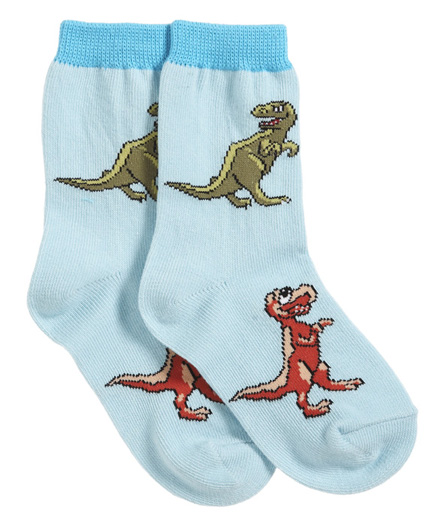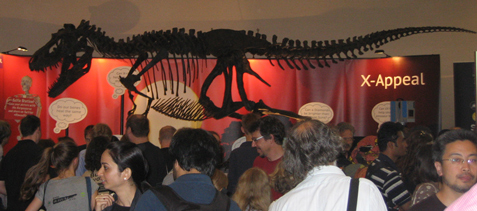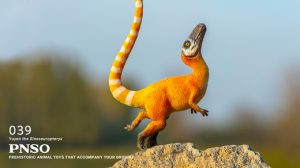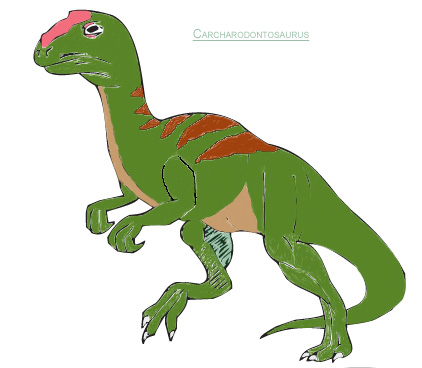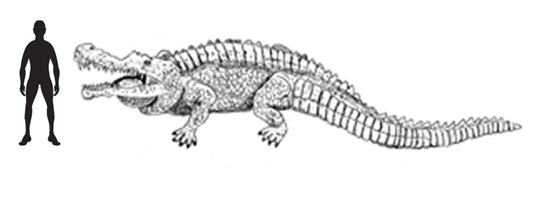Asteroid Thought Responsible for Late Cretaceous Impact May be Too Young According to New Study
New Data Suggests Baptistina Asteroid Is Too Young for Mass Extinction Event
If an extraterrestrial impact played a significant role in the mass extinction event that took place at the end of the Cretaceous, then which asteroid collision in deep space may have been responsible for setting in motion the chain in events that would ultimately lead to the death of the dinosaurs? This has been one of the intriguing questions that scientists have puzzled over since the publication of the paper by Luis and Walter Alvarez on the discovery of an iridium rich clay layer at the K-T boundary.
Baptistina Asteroid
The finding of the Chicxulub crater, a crater estimated to have exceeded a diameter of more than 100 miles, indicates an impact with an object approximately ten kilometres across. This collision some sixty-five million years ago may have speeded up the demise of the dinosaurs, and their reptilian relatives the marine reptiles and the pterosaurs.
Research suggests that there may have been a series of impacts around sixty-six million years ago. Such a catastrophic bombardment would have resulted in global environmental damage and this may have contributed to the extinction of nearly seventy percent of all terrestrial life. This impact theory has been largely accepted by the scientific community, but debate remains as to where this asteroid object that collided with Earth came from.
Everything Dinosaur reported back in 2007, on the work of a joint US and Czech team, published in the scientific journal Nature, that proposed an event between 140 million years ago (mya) and 180 mya may have set in motion the asteroid collision that would spell doom for the dinosaurs.
To read an article on this earlier research: End of the Dinosaurs Set in Motion by Jurassic Aged Asteroid Impact.
However, a new study may have cast into doubt the identity of the asteroid that led to the extinction of the dinosaurs.
In the 2007 study, scientists concluded that a large asteroid known as Baptistina collided with another enormous space rock in the asteroid belt between the planets of Mars and Jupiter. Huge fragments, debris from the collision were thrown out into the Solar System. A chunk of rock, a remnant from the Jurassic aged collision between these two bodies was believed to have struck Earth sixty-six million years ago, wiping out the dinosaurs.
But new data from the NASA-run Wise (Wide Field Infrared Explorer) telescope suggest that the Baptistina fragments are just far too young. The candidate asteroid, Baptistina, is thought to have collided with another asteroid in the main asteroid belt during the Middle Jurassic – sometime around 160 million years ago. A piece or pieces from this collision were flung out towards Earth, being captured by the gravity of the inner planets, this resulted in the devastating impact ninety-four million years later.
Scientists initially identified Baptistina as the source of this fragment, using estimates of its age from information gathered from visible-light telescopes based on the ground.
Late Cretaceous Impact
Making estimations of size and age of extra-terrestrial bodies is notoriously difficult to do with only reflected sunlight readings to work with, so researchers at NASA have used infrared emissions from asteroids, measured by the Wide-Field Infrared Survey Explorer (WISE) to recalculate the sizes and ages of thousands of asteroids in the Solar System.
Crucially, this new, more accurate information suggests that Baptistina didn’t break apart until around 80 million years ago, giving it less time to make it to Earth in time to flatten Tyrannosaurus rex and chums.
Dr Amy Mainzer, chief investigator on the Neowise (Near-Earth Wise observations) project at the Jet Propulsion Lab (JPL) in California, commented:
“Estimating the ages and origins of the asteroids should help us to correlate events on Earth and impact craters on the Moon with what is going on in the Solar System.”
Prior to the use of this new satellite based technology, estimates of the age of asteroids have been made from the size of the object and how reflective it is; a more reflective asteroid is generally thought to be younger. The size of an object in space has been traditionally measured by looking at how much sunlight is reflected from it. However, this methodology is fraught with problems, just like our own satellite (the moon), asteroids can wax and wane, depending on their position relative to the sun. The composition of an asteroid will also significantly reflect results. For example, ice covered objects will reflect more light compared to darker, rocky objects.
These problems can combine to make the size and age estimations inaccurate, a problem when considering Baptistina as the “smoking gun” asteroid collision evidence for the dinosaurs demise.
The WISE telescope instead looks at the infrared light emitted from space rocks, which is related to the temperature of the object. Infrared light is emitted from all objects, even if they are dark, allowing a much more accurate calculation of their size and therefore their age.
Dr Mainzer explained:
“We have collected data from 120,000 asteroids, and this is helping us to learn how the belt is made up.”
Critically, the Baptistina family of asteroids – those that were formed when the larger asteroid destructively entered the main belt, according to this new research – were only formed around eighty million years ago.
This gives the dinosaur-killing asteroid chunk only fifteen million years to move into a suitable place to be flung out of the main belt and to travel to Earth in time for the impact that marked the end of the Cretaceous. Scientists believe it would take an asteroid about ten million years to travel from the main asteroid belt between Mars and the gas giant Jupiter to Earth.
Dr Mainzer added:
“This doesn’t give a Baptistina fragment much time to get into a suitable position. The jury is still out, and we haven’t completely ruled out Baptistina.”
With new data being released all the time from the satellite/telescope teams at the Jet Propulsion Laboratory at NASA will have a great deal more information to work with.
Dr Mainzer expects that calculations, simulations and models based on this data “will keep people busy for decades.”
Let’s hope that for all our sakes, the scientists don’t find any nasty surprises in the analysis.
For models and figures of Late Cretaceous dinosaurs: “Les Dinosaures” Papo Prehistoric Figures.



